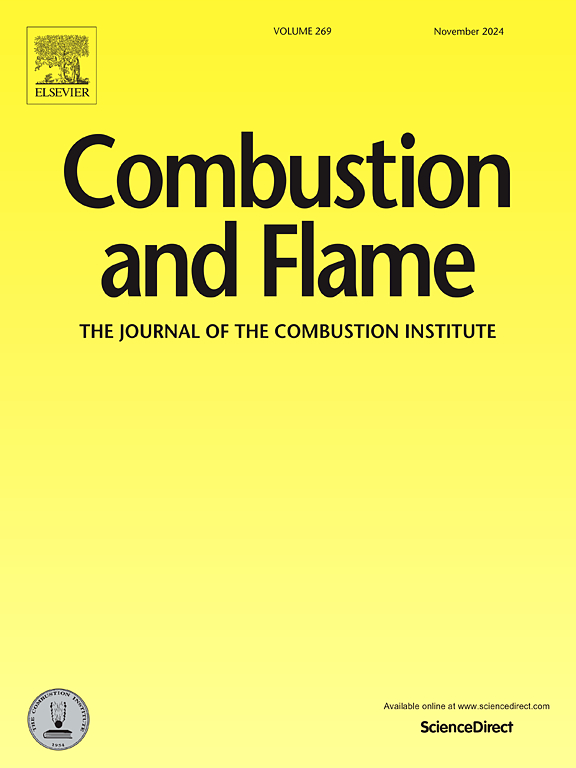Adjoint-based mean-flow uncertainty and feedback-forcing analyses of a thermoacoustic model system
IF 5.8
2区 工程技术
Q2 ENERGY & FUELS
引用次数: 0
Abstract
Clean combustion, particularly premixed hydrogen combustion aimed at reducing NOx emissions, is prone to thermoacoustic instabilities that can cause structural vibrations and equipment failures. This study focuses on a low-order model for a thermoacoustic prototype, a simple quasi-one-dimensional combustor comprising a plenum, premixing duct, and combustion chamber. Resonant modes of the combustor are identified by solving a nonlinear eigenvalue problem. Using an adjoint-based sensitivity analysis, the impact of uncertainties in base flow parameters on resonant frequencies and linear growth rates is assessed. The results obtained highlight the significant influence of variations in cold gas density within the plenum and premixing duct on the linear growth rates, potentially explaining discrepancies with literature data. Additionally, structural sensitivities in both the base and the perturbation flow are examined to evaluate the effects of a generic feedback mechanism on the eigenvalues. Structural sensitivities at the base-flow level are evaluated as a function of the flame position, identifying effective stabilizing mechanisms such as heat addition and mass flow rate reduction at duct intersections. The most stabilizing feedback mechanism is identified as mass fluctuations proportional to pressure perturbation at the end of the plenum, an effect achievable with Helmholtz resonators. Adjoint analyses permit uncertainty quantification of base-state parameters and gradient information for optimization strategies aimed at mitigating thermoacoustic instabilities through efficient and low-cost calculations.
Novelty and significance statement
The novelty of this research lies in its development of a comprehensive adjoint analysis framework for three types of sensitivity analyses within a thermoacoustic premixed combustor model. This paper uses base-state sensitivity to quantify the significant effect of base flow uncertainties, such as cold gas properties in the premixer, on the unstable resonant mode growth rates. In addition to structural perturbation sensitivity analysis, it uniquely applies structural sensitivity to base flow modifications, uncovering effective steady control mechanisms like mass suction and heating. The findings identify efficient approaches to mitigate thermoacoustic instabilities in premixed combustion systems and broaden the scope of potential control strategies.

求助全文
约1分钟内获得全文
求助全文
来源期刊

Combustion and Flame
工程技术-工程:化工
CiteScore
9.50
自引率
20.50%
发文量
631
审稿时长
3.8 months
期刊介绍:
The mission of the journal is to publish high quality work from experimental, theoretical, and computational investigations on the fundamentals of combustion phenomena and closely allied matters. While submissions in all pertinent areas are welcomed, past and recent focus of the journal has been on:
Development and validation of reaction kinetics, reduction of reaction mechanisms and modeling of combustion systems, including:
Conventional, alternative and surrogate fuels;
Pollutants;
Particulate and aerosol formation and abatement;
Heterogeneous processes.
Experimental, theoretical, and computational studies of laminar and turbulent combustion phenomena, including:
Premixed and non-premixed flames;
Ignition and extinction phenomena;
Flame propagation;
Flame structure;
Instabilities and swirl;
Flame spread;
Multi-phase reactants.
Advances in diagnostic and computational methods in combustion, including:
Measurement and simulation of scalar and vector properties;
Novel techniques;
State-of-the art applications.
Fundamental investigations of combustion technologies and systems, including:
Internal combustion engines;
Gas turbines;
Small- and large-scale stationary combustion and power generation;
Catalytic combustion;
Combustion synthesis;
Combustion under extreme conditions;
New concepts.
 求助内容:
求助内容: 应助结果提醒方式:
应助结果提醒方式:


